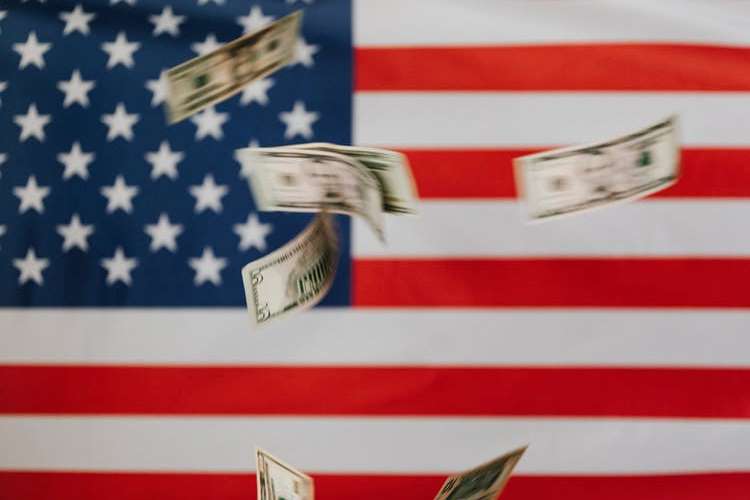Inflation Nation

Image Source: Pexels
Whence cometh inflation?
Today, we turn to a Nobel Laureate economist for answers. And then, appalled, we figure it out for ourselves.
First, from The Wall Street Journal comes news that the feds are spending even more money that they don’t have:
The federal Deficit widened to a record $249 billion last month
At that rate, the annual deficit would grow to nearly $3 trillion. The economy does not save that much money, so to finance the deficit, the Fed would have to print money.
But wait, revenues for the month were only $252 billion. So, the federal government is borrowing almost as much as it receives in taxes.
Does that cause inflation?
Of course, it does.
QE to QT
Meanwhile, the Fed has switched from printing money (QE) to un-printing it (QT…in which it retires existing debt, thereby reducing the quantity of money). And it’s raising rates to keep inflation down. CBS News:
The Consumer Price Index rose 7.1% over the last 12 months, the Labor Department said, lower than the 7.3% increase economists had expected and the slowest rate of inflation since December of 2021. Falling prices for energy, commodities and used cars offset increases in food and shelter.
The CPI is a little lower than the month before. But it’s still more than 300 basis points above the Fed’s key rate target. Does that cause inflation?
Yes, again. Anytime the real interest rate is negative (below inflation) people are encouraged to borrow rather than save. The banks – including the Fed – create new money to lend out. The result? Higher prices.
But wait. Here’s an economist with a Ph.D., a Nobel prize, and a contrary opinion. We’re talking about Joseph Stiglitz. The Intercept:
The Pandemic and War — Not, Government Spending — Caused Inflation, According to Nobel Prize Winner
A new paper by Ira Regmi and Joseph Stiglitz…suggests that we can use the tools of the government to make life better for almost everyone. If they’re wrong, perhaps that’s impossible — because the Immutable Laws of Economics simply don’t allow it — and if we try to make our lives better, we will be punished for our hubris.
Money for Nuthin’
The journalist goes on to explain why he thinks Stiglitz is right; apparently, he believes that there are no immutable laws of economics. There are just opportunities for bold economists to pick up hammer and chisel and go to work. Referring to the post-WWII period he says:
“As the Polish economist Michal Kalecki wrote at the time, we had discovered we could create a more or less permanent “synthetic boom”: high wages, high worker power, and low unemployment. But we have to choose to do so. We can still make that choice, but only if we understand the reality in front of us.”
There are so many idiotic ideas in this pensée, we can’t begin to contradict them. If government really could ‘choose’ to make life better for almost everyone, surely one government – eager for re-election – would have done it. But none has. So, let’s start from scratch.
People create wealth by providing each other with goods and services. There are no public policy ‘choices’ involved. People do the best they can.
Their goods and services are measured in ‘money.’ If more money is put into the system, above and beyond the measure of the goods and services that the system produces, the result is inflation.
No Free Lunch
Adding more money creates the sensation of a boom. But it is a ‘synthetic’ boom. That is, it is a fake. There are no goods and services to support the cash provided by the manipulators. So, prices rise.
In today’s inflation, the feds fiddled both sides of the equation. They increased the supply of money while also decreasing (by lockdowns, sanctions, and mandates) supplies of goods and services. The consumer was caught in a vise, squeezed on both sides.
That didn’t happen after WWII for a very obvious reason: government spending went down, not up. In other words, the Feds didn’t create a ‘synthetic’ boom at all. Instead, they stood back. Federal spending hit 40% of GDP in 1945. Three years later, it was only 10%. It was that big boost – from letting people go about their business – that created a real boom. They built houses, launched businesses, started careers and began their families – greatly increasing the goods and services available to each other, while the feds put relatively less money into the economy.
The post-war boom carried the US up to the 1970s. It was then that the Johnson Administration decided to ‘use the tools of government to make life better for everyone.’ Including the Vietnamese. Johnson’s ‘guns and butter’ spending – war in Vietnam, war on poverty – both flopped. But inflation rose to over 13%.
Government controls the money. The more it spends…the more it meddles in the economy or goes to war…the more it borrows and prints – the higher prices go.Immutable laws?We don’t know.But pretend they don’t exist… and good luck to you.
More By This Author:
End. The. Fed.A Sea of Lies
Bye Bye Bubble World



